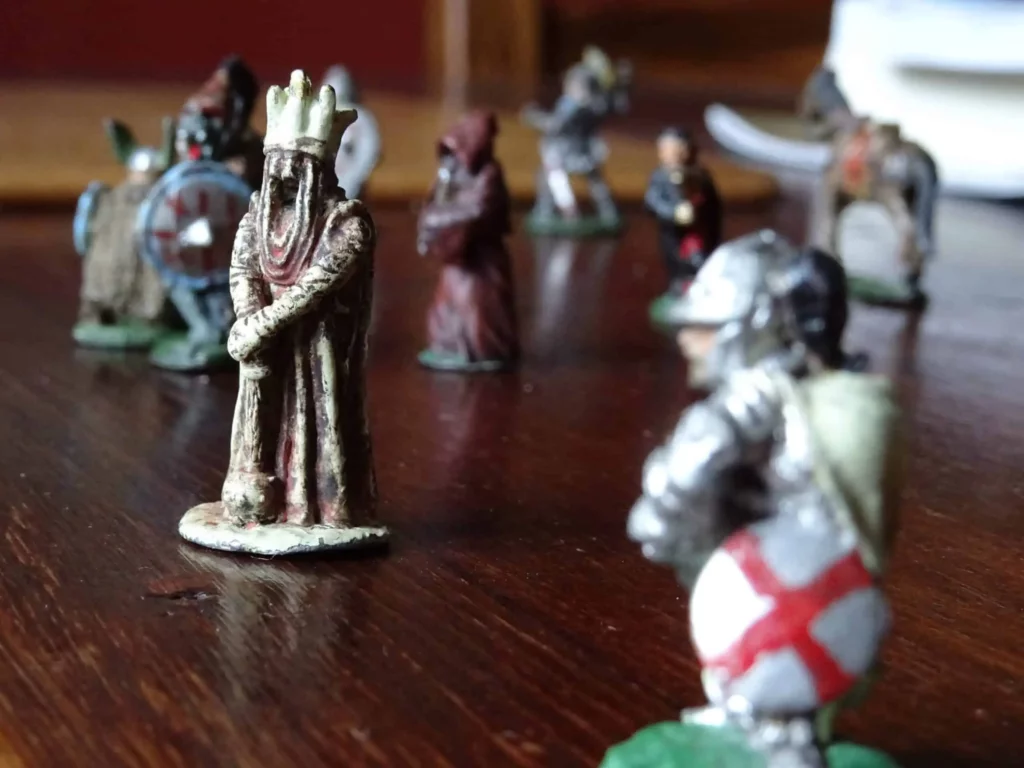You have the option to choose from a variety of spells for your characters in D&D 5e. This allows you to pick a magic arsenal that is dependent on your character’s role on the battlefield.
To deal magic damage to their enemies, an offensive spellcaster will likely choose spells such as fireball or ice knife.
To deal magic damage to their enemies, an offensive spellcaster will likely choose spells such as fireball and ice knife.
A defensive spellcaster will use spells such as shields and blessings to boost their allies while in combat. A healer will focus on healing spells.
Although some spellcasters may mix and match spells, they will all have their own preferences and will choose spells that best suit those needs.
Teleport, one of the spells everyone should have is another. This spell is very useful, but it can be very complex. It requires careful reading to ensure you are using it correctly.
What is Teleport?
This spell is very long, so we will be taking it one at a time. Here are the key stats are taken from the Player’s Handbook.
- Casting time: 1 Action
- Range: 10 Feet
- Components: V
- Duration Instantaneous
- Classes: Bard, Sorcerer, Wizard
You and up to eight other willing creatures can instantly be transported to any destination you choose.
You can only target objects that are able to fit within a 10-foot cube. It cannot be carried or held by any other creatures.
You must know the destination you choose, and it must exist on the same plane as you.
It can be cast by either a Sorcerer or Bard. It can travel up to ten feet and requires only a vocal component.
Teleportation can be done instantly and you and 8 other creatures can travel to any place you know.
Teleporting a single object is possible, but it must fit within a 10-foot square. Teleporting a creature that is not willing to be teleported is not possible.
The object can’t be carried or held by the unwilling creature.
Teleporting people requires that they are willing to be teleported. In most cases, party members and NPCs will be happy to be teleported.
Teleporting to another place you know about is possible, provided it is on the same plane as you.
This is the mechanical part of the spell. However, it becomes more complex as we continue to read.
When the spell is cast, the GM rolls a d100 and consults the table below.
| Familiarity | Mishap | Similar Area | Off Target | On Target |
|---|---|---|---|---|
| Permanent circle | – | – | – | 01-100 |
| Associated object | – | – | – | 01-100 |
| Very familiar | 01-05 | 06-13 | 14-24 | 25-100 |
| Seen casually | 01-33 | 34-43 | 44-53 | 54-100 |
| Viewed once | 01-43 | 44-53 | 54-73 | 74-100 |
| Description | 01-43 | 44-53 | 54-73 | 74-100 |
| False destination | 01-50 | 51-100 | – | – |
Where can you teleport?

Teleporting is easier if you know the area you’re teleporting to. You will be able to teleport to the location easily if you are familiar with it, such as your home, neighborhood, or other areas.
You can also teleport from one permanent Teleport circle to another object you know is associated with it.
The greater your risk of not reaching your destination successfully, the more you know about it. Teleportation will be affected by the familial status of the destination.
However, if you don’t intend to teleport towards an area that you know, you can read the rest of this spell description to find out where you’ll end up.
A familiar area is one that you are very familiar with. It is your home, your castle, and your bedroom. It’s easy to teleport to if you’ve been there often.
You will recognize familiar areas that have a teleportation loop and the sequence to activate it.
These are places you may have seen casually or might have read about in books. While you might be able to recall the name of a landmark or place, it is not likely that you know much about the area.
A place that has been seen once is one you have never visited or experienced. The description of it relies on the help of a third party.
The mythical pond might be something you have heard about, but it is only in legends and folklore and an inaccurately drawn map.
A false location is not possible. You may have lied about the location, or you might have mistakenly believed it to be real. You are asking for trouble if you attempt to teleport to it!
How To Teleport Safely?
So far, we’ve talked about how to teleport. Teleporting safely, which I’d define as getting where you want to go with the same number of limbs and eyes as when you left, is a whole different story.
If you want to teleport to a place where there isn’t already a permanent circle, there are two main ways to improve your chances of getting there.
First, you should know a lot about the place you want to go.
You could try to see as much of the world as possible as a wizard (especially if you have a flying mount), but my favourite way is to use the Scrying spell to get a good look at the target location before I go there.
Second, using Associated Objects well is probably the best way to always get where you want to go.
Pick up something small wherever you go that you might want to teleport back to. A playing card, a picture frame, or even a piece of stone will do in a pinch.
Just make sure to add more Associated Objects to your stash every six months.
Obviously, jumping to a known teleportation circle is the most reliable way to teleport safely.
Rolling on the Table
Depending on how familiar you are with the object, the DM may roll on the teleporting tables to see what happens. You have a better chance of rolling a D100 dice.
Knowing more about the area you are teleporting to will increase your chances of hitting the target. The chances of failure are negligible if you know the target and the teleportation circle.
The more you know about your target, the higher the likelihood of a mishap. These are some common teleportation mishaps, which can affect both you and the objects you are teleporting.
Mishaps when Teleporting

Depending on your familiarity, the D100 will be rolled. Then, one of the four options is available to you.
The moment you appear wherever you want, you are on target. This could be your home, your castle, or a set of teleportation circles.
These will all give you a successful and safe teleport, regardless of how many rolls were made.
You can also have an item that is associated with the location, such as a blanket, decoration piece, or another personal item. You can teleport to the area where you own the item if you possess it.
Your group and you are taken off-target and moved in a random direction determined by the DM. This is done using a dice roll and the DM.
The DM can roll a d8 to assign each number of points on a compass (North-South, East, West).
Next, Northeast and Northwest, Southeast and Southwest. Depending on your role, you may have teleported in that same direction as the target for a specific distance.
It could be a few miles or a hundred miles from your destination. Once you reach it, the adventure begins!
You can find a similar area to the place you want to teleport. Teleporting to a castle located in the woods might be possible if you want to teleport there.
This could be problematic if you’re teleporting into an evil lair, monster’s hideout, or if you end up in a completely new monster’s lair you have to fight your way out from.
Finally, mishaps cause 3d10 force damage to any teleporting character or object. The teleportation dice then get rerolled, and you can see where you land next.
You could be far away from your target, even though you are not directly injured by the mishap.
Be familiar with where you’re teleporting to!
Teleportation rules show that the greater your familiarity with the area you’re transporting, the lower the chance of an accident or mishap.
Although teleportation is not the best transport spell for those who want to travel to unfamiliar places, it can be a great spell to use if your party wants to teleport from one familiar area to another.
However, teleportation mishaps can add drama to the RP. They can also warn your party against overreliance on teleportation to get from one place to another.
Sometimes walking is the best method to get to your destination. This lesson might be something your party needs to learn.
Using teleportation in combat
Teleporting items can be used for turning your character into a mail service that moves items from one place to the next. Teleporting items in combat is possible, but it can be a little finicky.
Let’s suppose you see a boulder 10×10 that fits the description of what you could teleport. A rampaging dragon is running along the road.
The boulder could be teleported above the dragon, and it would fall. Your DM can then use the rules for collapsing roofing to deal damage.
Although teleportation is a powerful combat spell, it can also be a useful one.
However, you will need to talk to your DM to clarify the rules and make sure that you are able to use it to do damage. You can’t send enemy creatures teleporting, as nine out of ten are not willing targets.
Teleport FAQs
How is Teleport Useful?
Teleportation prevents backtracking during a campaign. Teleportation will prevent your party from having to travel between towns A and B every time they need to talk with that NPC for information or quests.
It can also be used to cut down travel time when characters are too strong to handle random encounters or when time is of the essence. Teleportation isn’t something that you use every time you need to travel, but it can be very helpful when your party has to cross long distances quickly.
How can I increase my familiarity with a particular place?
Just like in real life, you can get familiar with a place by visiting it multiple times and getting to know its people. Although it will take some time to get to know the area, you may be able to do so within a campaign. You can grab an item from the area and use it as a focus for teleportation.
Finally, you can find or create a permanent Teleportation Circle that will allow you to teleport toward the circle regardless of how familiar you are with it. It’s like a quick travel option for video games. If your characters are familiar with multiple teleportation circle locations, they can teleport to the circle.
How can a DM stop Teleport from being overused?
Some parties overuse spells. Teleport is one of them. Teleporting for both short and long distances can hinder your party’s ability to gain experience, explore new lands, or find new things. Here are some ways to reduce the use of teleporting.
Forbiddance spells can be used to stop planar and teleportation, and the teleportation circles can be destroyed with powerful magic. This can be your entire adventure, in fact. You might also be able to intercept your characters if they are teleporting constantly from one place to another.
Planar shifting enemies may be able to detect when a party teleports along a predetermined route and launch an ambush at either end. This can make for a great encounter. Teleportation can also be stopped from being misused. Teleportation can be damaging to the magic weave so it is discouraged. An interplanar police force arrives to arrest or detain those who use it.
Your characters may not be familiar with every location. They could end up far from their destination, or they might land in a different location that is closer to their home. Or they might have their teleportation interrupted by mishaps as soon as they reach the monster’s lair. Instead of banning teleportation magic, and all its benefits, you can make it more difficult to achieve. This will give you an adventure.









